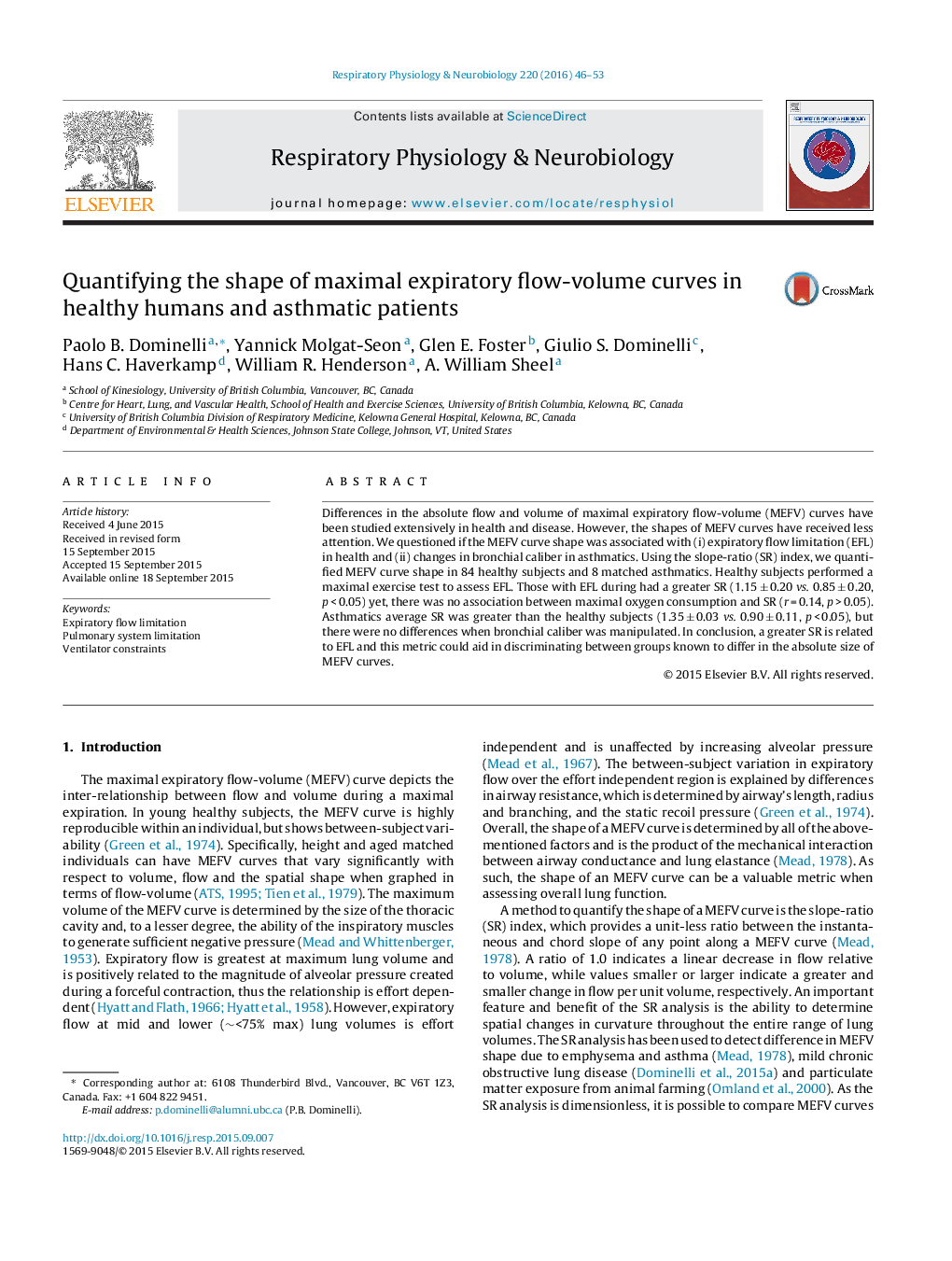| Article ID | Journal | Published Year | Pages | File Type |
|---|---|---|---|---|
| 2846752 | Respiratory Physiology & Neurobiology | 2016 | 8 Pages |
•The slope-ratio (SR) quantifies the shape of maximal expiratory flow-volume curves.•Those with expiratory flow limitation had a greater average SR.•Inspiring heliox had no effect on the SR.•Compared to healthy controls, asthmatics had a greater average SR.•No changes in SR were observed when bronchial smooth muscle tone was altered.
Differences in the absolute flow and volume of maximal expiratory flow-volume (MEFV) curves have been studied extensively in health and disease. However, the shapes of MEFV curves have received less attention. We questioned if the MEFV curve shape was associated with (i) expiratory flow limitation (EFL) in health and (ii) changes in bronchial caliber in asthmatics. Using the slope-ratio (SR) index, we quantified MEFV curve shape in 84 healthy subjects and 8 matched asthmatics. Healthy subjects performed a maximal exercise test to assess EFL. Those with EFL during had a greater SR (1.15 ± 0.20 vs. 0.85 ± 0.20, p < 0.05) yet, there was no association between maximal oxygen consumption and SR (r = 0.14, p > 0.05). Asthmatics average SR was greater than the healthy subjects (1.35 ± 0.03 vs. 0.90 ± 0.11, p < 0.05), but there were no differences when bronchial caliber was manipulated. In conclusion, a greater SR is related to EFL and this metric could aid in discriminating between groups known to differ in the absolute size of MEFV curves.
